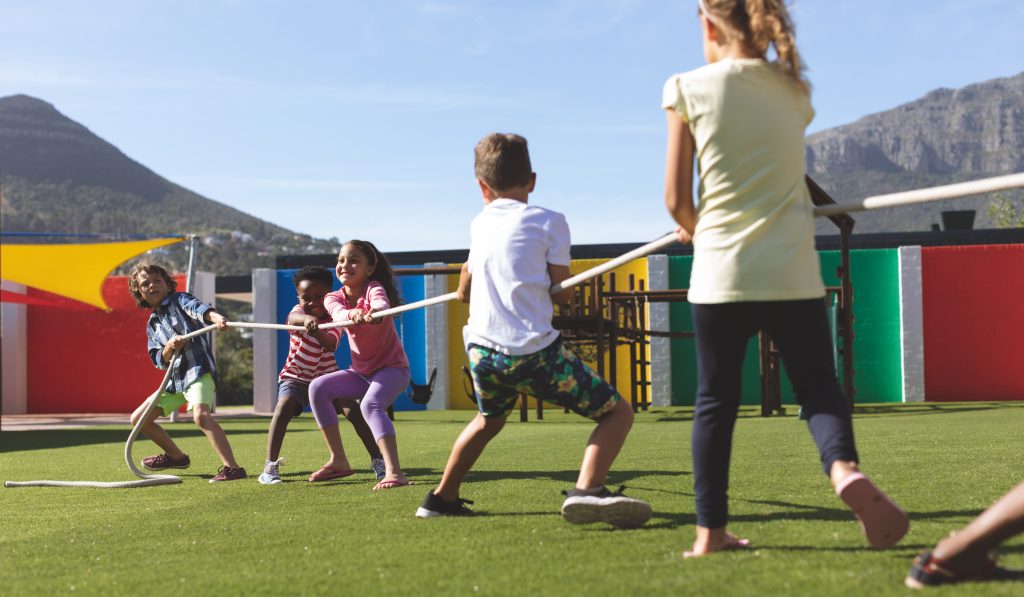Creating classroom rules is a routine part of starting the school year, yet many educators find themselves revisiting them repeatedly as student engagement dips or behaviours slip. Often, the problem isn’t the rules themselves, but how they’re introduced. When rules are handed down without discussion, they can feel arbitrary or disconnected from students’ experiences. This not only reduces their effectiveness but can also undermine a sense of shared responsibility within the classroom.
Involving students in shaping classroom agreements reframes rules as a tool for community-building rather than control. When students help co-create expectations, they’re more likely to understand their purpose, follow them consistently, and hold one another accountable. Across AISL Mall’s network of schools, educators are finding that this collaborative approach builds trust, strengthens classroom culture, and fosters self-regulation, which are all essential elements for deep learning and positive relationships.
Start with Shared Values, Not Just Rules
Before jumping into a list of dos and don’ts, take a step back and invite students to reflect on the kind of classroom they want to be part of. Framing the conversation around values encourages a deeper sense of purpose behind the rules that follow.

One approach is to begin the year with a classroom charter or values map. Ask students questions like:
- What makes a classroom feel safe?
- What helps you learn best?
- How do we want to treat one another?
From their responses, you’ll notice recurring themes, such as respect, responsibility, kindness, and fairness, which often emerge naturally. These shared values form a foundation for building relevant and meaningful behavioural expectations.
By grounding classroom rules in these co-defined principles, students are more likely to see them not as external controls, but as agreed ways of protecting a positive environment for everyone. It also creates a reference point you can return to throughout the year: “Does this behaviour reflect our shared values?”
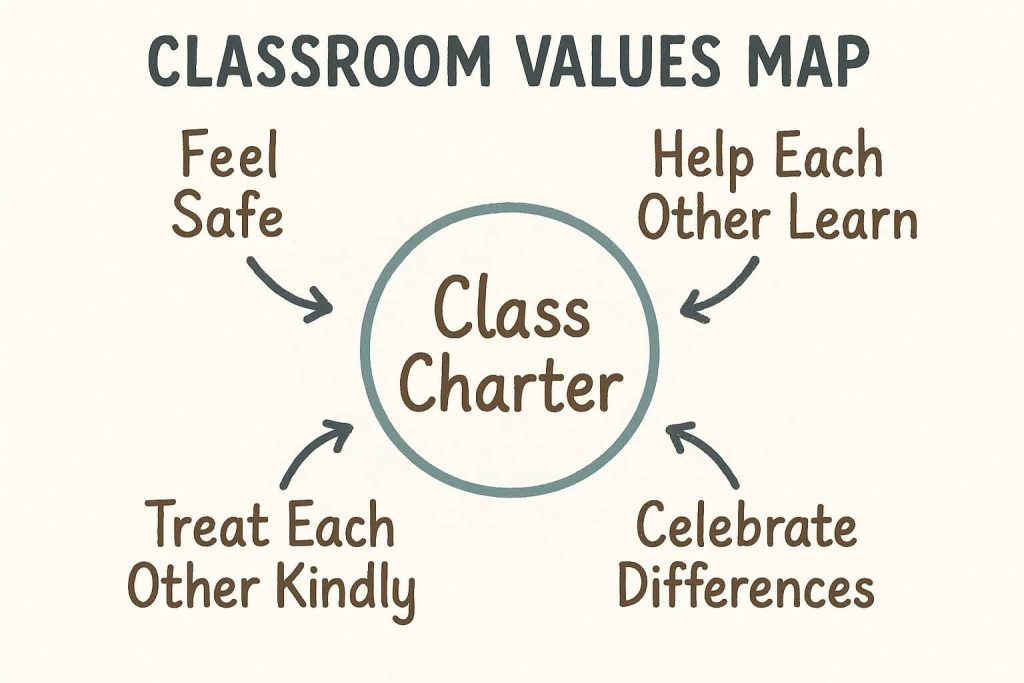
Co-Create the Rules Together
Once you’ve established a foundation of shared values, the next step is to transform those ideas into actionable, co-created rules. This process gives students a genuine voice and increases their sense of ownership and responsibility.
Rather than presenting a ready-made rule list, invite students to draft the rules collaboratively. You might:
- Break the class into small groups and assign each group a key value (e.g. respect, collaboration, responsibility). Ask them to generate a few behaviours that reflect this value in action.
- Collect suggestions on the board and review them together, looking for overlaps or opportunities to combine ideas into concise, positive statements.
- Use prompts like “What helps us all learn?” or “What does respect look like in this classroom?”
Keep Rules Clear, Positive and Purposeful
It’s not enough to have rules, it’s more important that students understand and believe in them. That’s why clarity, tone, and relevance are key. Overly vague or punitive language can quickly lose meaning or spark resistance.
What Makes a Rule Effective?
Think of the difference between:
- “Don’t talk when the teacher is talking”
vs. - “We listen when someone is speaking”
The second version is specific, positive, and rooted in mutual respect. It’s also easier to remember, especially for younger students or multilingual classrooms.
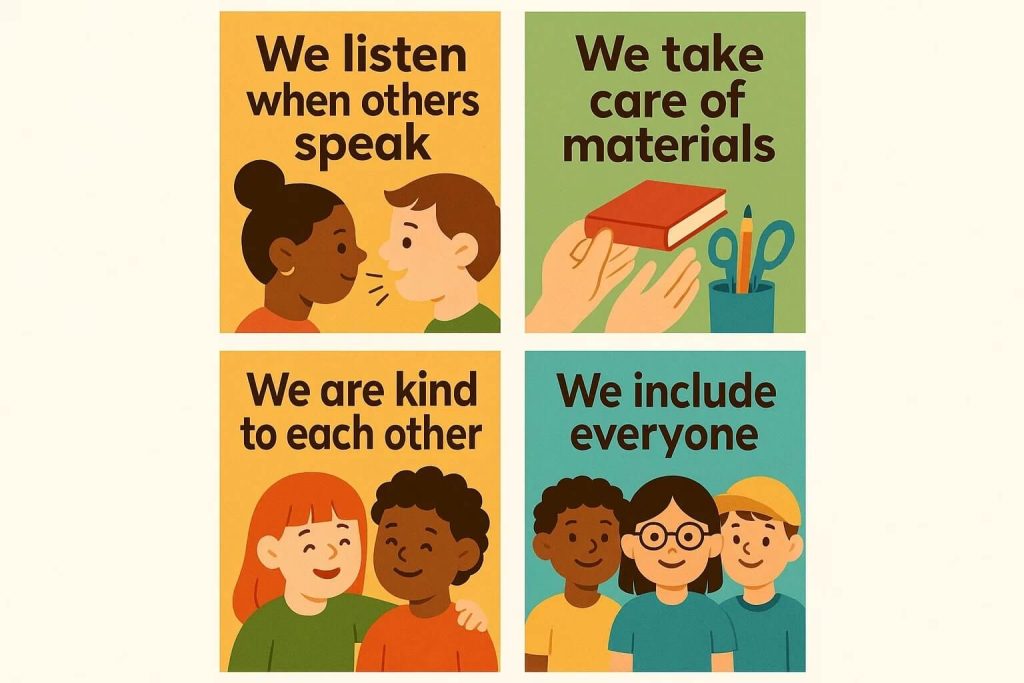
Effective rules should be:
- Clear: Use simple, age-appropriate language. Avoid abstract or overly broad terms.
- Positive: Frame expectations in terms of what to do rather than what to avoid.
Connected: Link each rule back to the values or goals the class agreed on.
A Quick Test for Each Rule
Ask:
- Can every student understand what this rule means?
- Does it help create a safe, respectful, and productive classroom?
- Is it something students can actually follow in everyday practice?
Revisit, Reinforce and Reflect Throughout the Year
Even the most thoughtfully co-created rules can fade into the background if they aren’t revisited. Embedding classroom expectations into everyday learning requires intentional reinforcement, along with gentle, regular reflection.
Making Rules Part of the Rhythm
Use check-ins: Weekly class meetings or morning routines can include a quick reminder of classroom norms. “Which rule helped us work well together this week?” or “Is there a rule we’ve forgotten about lately?”
Model expectations: Teachers and support staff play a critical role in reinforcing rules through their own behaviour. Narrating positive choices (e.g. “I noticed how respectfully you waited your turn”) can be more powerful than correcting mistakes.
Visual reminders: Keep the rules visible and accessible. In younger classrooms, use icons or illustrations. In secondary settings, include a digital copy on the class platform or incorporate them into slide decks.
Adapting Rules When Needed
Context shifts. Group dynamics evolve. That’s why you wish to set aside time each term to review the classroom agreement together. Are the rules still relevant? Do they need rewording or revising?
This process gives students a renewed sense of ownership. It also reinforces the idea that classroom norms aren’t static; they’re tools we can shape to support our shared learning.
Make Space for Student Voice and Self-Regulation
Creating effective classroom rules is a blend of setting expectations and nurturing agency. When students help shape the classroom environment, they’re more invested in upholding it.
Encouraging Dialogue, Not Directives
Instead of handing down a list of rules, invite students into the process:
- Begin with an open discussion: “What helps us learn best as a group?”
- Explore real scenarios: “What should happen if someone feels left out?” or “How do we handle distractions?”
- Vote on key agreements: Let the class decide which 4–6 values or behaviours feel most essential.
This collaborative approach builds a culture where rules are seen as shared commitments, not imposed boundaries.
Building Skills for Self-Regulation
Student ownership works best when paired with guidance on how to navigate choices. That’s where self-regulation comes in:
- Use reflective prompts: When rules are challenged, ask “What happened?” and “What can we do differently next time?”
- Practise peer mediation: Some classrooms train older students to support conflict resolution, modelling empathy and fairness.
Create quiet zones: Offering a calm space for self-regulation can prevent small issues from escalating into major disruptions.
Laying the Groundwork for a Respectful, Engaged Classroom
When students help create the rules, they’re owning the expectations. By prioritising collaboration, clarity, and reflection, educators can build classroom cultures rooted in mutual respect and shared purpose. For more evidence-based strategies and global educator insights, explore the resources available at AISL Mall.
Curriculum and Guides that may be of interest:
Get a special discount by quoting code AISLMALL during CHECKOUT.
3Education: StoryTellAR
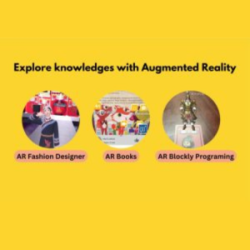
StoryTellAR is an online and remote platform designed specifically to connect offline materials seamlessly with interactive digital content, using Computer Vision (Augmented Reality). With a user-friendly user interface, curators can use their mobile phone to associate audio recordings, videos and other digital interactions such as audio, AR video plane and URL to any artworks. The corresponding digital content customized by their very own creators will pop up, making the book seamless, personalized and effective.
AlGreen: E-book

AlGreen is at the forefront of developing microalgae technology for air purification and carbon capture, driving a sustainable future. AlGreen’s ebook introduces young learners to biology’s wonders and its role in sustainability. Covering cellular and plant biology, climate science, and future biotech like carbon capture and renewable energy, it inspires environmental stewardship and a passion for protecting our planet.
Chinese 1-2-Tree: Leveled Reading Platform For Pre-k To Grade 8
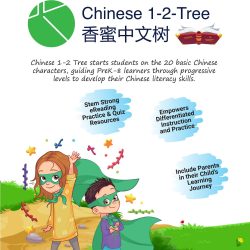
Chinese 1-2-Tree is a unique leveled reading interactive learning platform designed to provide progressive leveled reading starting with 20 basic characters. Chinese 1-2-Tree offers literacy essentials for every PreK-8 Chinese classroom. We offer a complete solution for reading instruction and student practice, perfect for use in class and at home. Rely on our easy-to-use resources to build foundational skills and strengthen reading comprehension.
Codementum: Gamified Coding Training Platform and Coding Curriculum
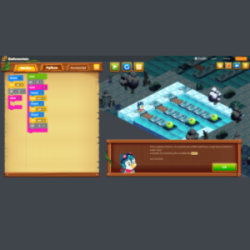
Codementum offers a fun, interactive platform to teach kids coding through block-based and text-based languages like Python and JavaScript. Kids learn to create mobile games, apps, and AI projects at their own pace, with gamified courses, self-guided challenges, and resources for all experience levels.
NovaAcademy: Ready-to-Go Curriculum Sets

Novalearn Limited is an EdTech company transforming education by seamlessly integrating machine learning, studio-produced edutainment, and quality STEAM education aligned with international K-12 curricula. All the teaching resources you need for fun and enriching classes, created by the NovaLearn team of experienced educators and industry experts. Each curriculum set includes Project lesson plans, Engaging videos, Interactive activity sheets and Skill-building exercises
Oxford University Press Cambridge IGCSE/O Level/AS & A Level Exam Success Revision Guides
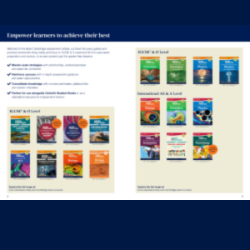
Oxford University Press is a department of the University of Oxford. It furthers the University’s objective of excellence in research, scholarship, and education by publishing worldwide. Cambridge Exam Success Guides from Oxford University Press provide unique exam support and revision guidance for Cambridge IGCSE & O Level and AS & A Level students. Matched to the latest Cambridge assessment criteria. Perfect for use alongside Oxford Resources for Cambridge Student Books or as a standalone resource for independent revision.
SAM Labs: STEAM Pathway Schoolwide Annual Subscription
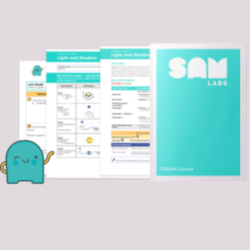
SAM Labs, an award-winning EdTech company, empowers over 9,000 schools in 60+ countries with innovative Coding and STEAM tools. Students create projects like smart city lighting and solar habitats while meeting curriculum standards, inspiring problem-solving and fostering teacher creativity.







